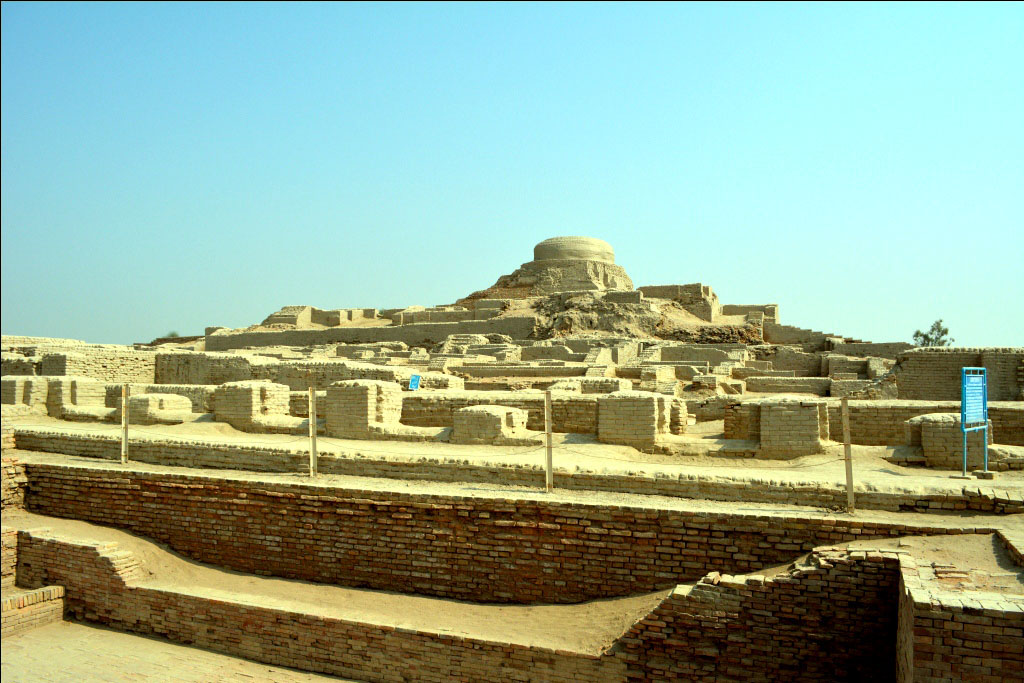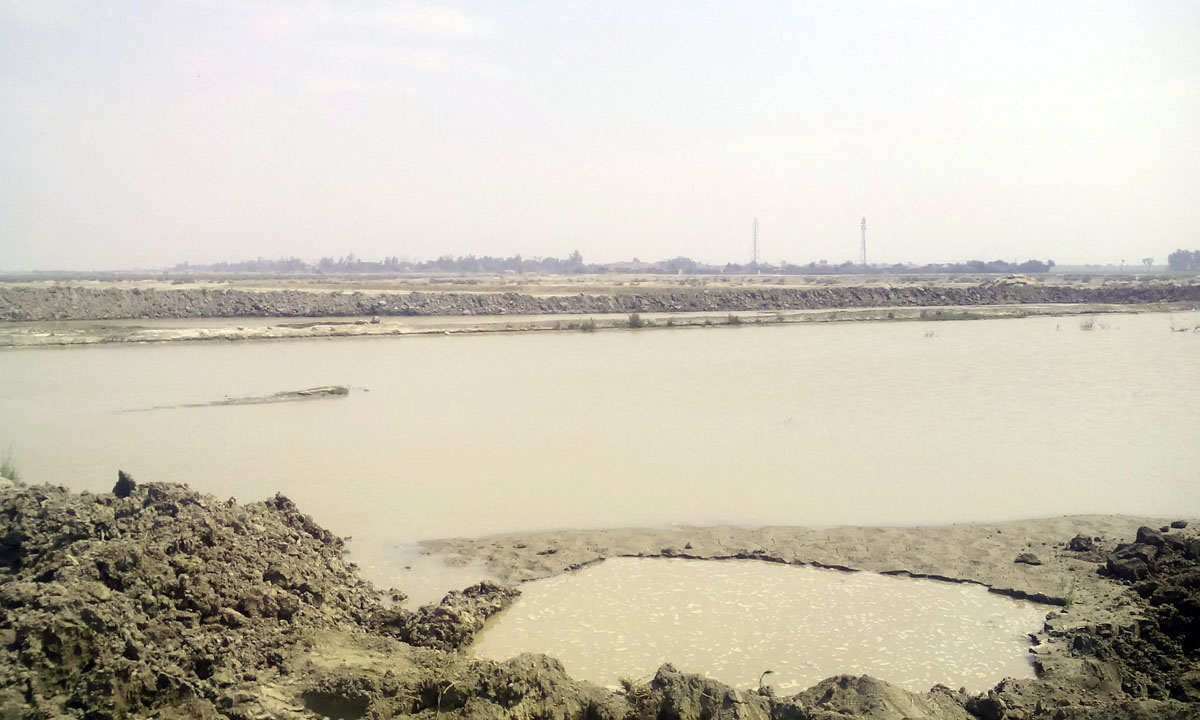
KARACHI: The recently constructed fish farm right on the undiscovered area in the prehistoric city of Mohenjo-Daro by an influential feudal-lord in Larkana district, Sindh has raised several questions about the safety of the ruins of the ancient city.
The 5000 years old city of Moenjodaro or Mohenjo-Daro, a Sindhi language word for “the mound of dead” is already suffering with salinity and water logging due to the massive rice cultivation in the home district of former Prime Minister Shaheed Benazir Bhutto.
“It is a protected site and no one can harm it, so when we came to know about the fish farm, we contacted police and registered a case against the culprits,” Mohenjo-Daro’s curator Irshad Ali Rid told News Lens Pakistan during a telephonic interview.
Discovered in 1922, the Mohenjo-Daro site was included in the list of World Heritage Sites, by the United Nations Educational, Scientific and Cultural Organization (UNESCO) in 1980. By their rules, even government authorities cannot lay hands on World Heritage Sites.
Station House Officer (SHO) of Mohenjo-daro police station Ali Murtaza Chandio told News Lens Pakistan, “After getting complaints from the curator we launched an official case against local influential feudal lord Deedar Ali Behan for damaging the site under case number 3/2015 section 447 and 427 of Pakistan Penal Code (PPC) and section 17, 18, 21 of Sindh Antiquities Act 1997.”
“We arrested the culprits and buried back the fish farm and now the case is in the court,” he added.
However, the accused denied for being involved in the construction of the fish farm and said that his political opponents have somehow managed to make this case against him.
“I do not own that fish farm. My political opponents have constructed this fish farm and have managed to make this case against me, otherwise, I have nothing to do with it,” accused Deedar Ali Behan told News Lens during a telephonic interview.
Though, local police has lodged an official case against the landlord and buried the fish farm, but heritage lovers’ claim that digging a huge size ditch and filling it with water has caused an irreversible lose to this World Heritage Site.

Qazi Aftab, a heritage lover and resident of Dokri Town near Mohenjo-Daro, while talking to News Lens Pakistan said, “I have personally witnessed that with the help of excavators, a large fish pond was constructed and that was later filled with water right on the site. The prehistoric city is buried under this area and it has caused heavy losses to the site.”
In January 2014, the controversial Sindh Festival organized by Pakistan People’s Party (PPP) chairman Bilawal Bhutto Zardari also caused huge loses to the site.
“It is our national heritage and government must ensure to protect it from the possible threats and also we demand government to demark the actual area of the site and construct a wall or fence to protect it from man-made disasters,” Aftab said.
With the passage of time, lack of proper care for the site, increasing level of ground water and variation in the weather, the site has already beard huge losses. In such conditions the construction of fish farm is posing serious threats to the site.
In late 1970s government banned rice cultivation in certain area near the site to protect it from water logging. But that too was not enforced.
The official record made available to News Lens Pakistan revealed that in 1972, as a part of Master Plan for the site, 72 tube-wells were to be installed in 3 stages to maintain the groundwater stable.
But later it was decided that 28 tube-wells would be installed so that they can suck the ground salinity and throw it into a special drain that will be constructed for this purpose, which was to no benefit.
Director of Archaeology Sindh Qasim Ali Qasim said that in 2006 his department planned a natural bearer against salinity to protect the site, under which some indigenous salt-eater plants were grown around the remains.
“The plants again attracted the cattle from nearby villages as grazing ground and walking of animals at the site caused more losses, as there is no fencing or boundary wall to the site,” Qasim told News Lens Pakistan.
“As the total area of the site is unknown and only the 10 percent of the total area of this prehistoric city has so far been excavated, therefore the department can’t fence area without knowing the actual area of the site,” he added.




Once declared the ‘protected site’ must be protected by the authorities. One should pay thanks to Amar Guriro for bringing our attention on the important issue.
So bad. PPP is mess. Please save Moenjodaro.
One of the oldest and richest world heritage site in INDUS Vally, known as Mohen jo Daro in sindhi, but unfortunately due to lack of interest and mismanagement this we will lost in future. simply there is need of drastic action against culprits. Dear Amar this one is the best, informative and timely story. I’m really impressed. Well done dear.